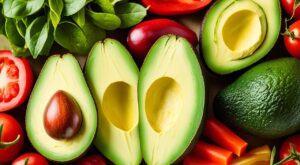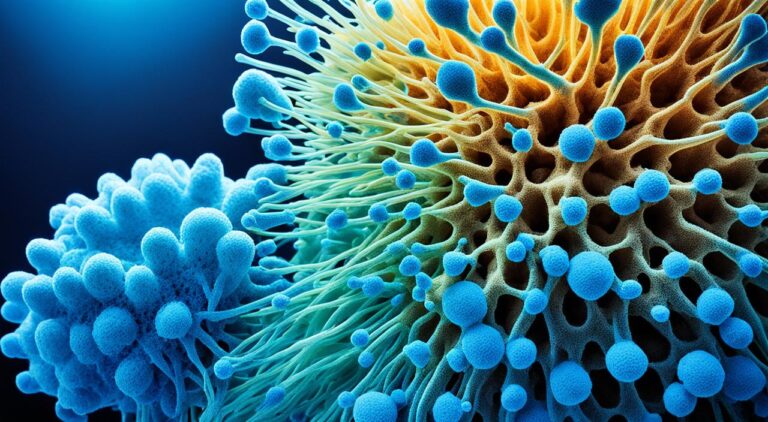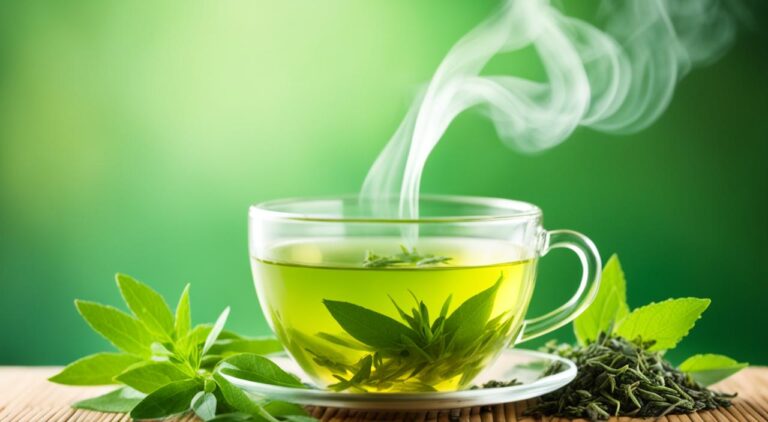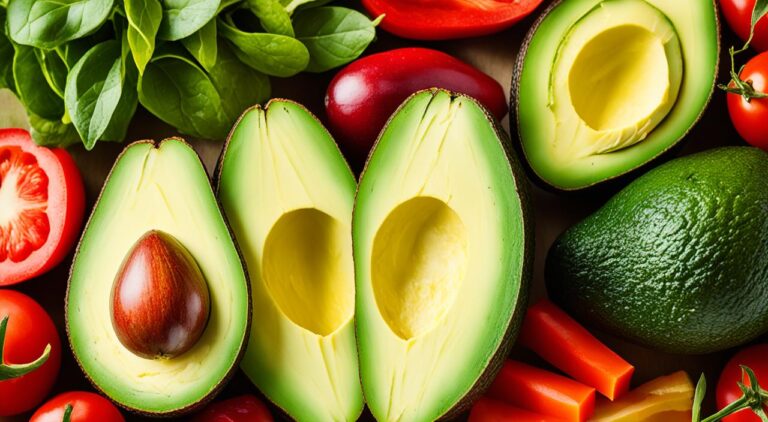Discover the incredible health benefits of honey from wild bees and how it can support your immune system and overall wellness. For thousands of years, honey has been cherished for its natural healing properties. Made by bees, this golden elixir is packed with vitamins, minerals, enzymes, antioxidants, and other nutrients that can nourish and heal the body.
Honey from wild bees stands out for its unique properties. As these bees pollinate a variety of plants, the honey they produce contains a diverse range of beneficial compounds. From the raw and organic nature of bee products to their rich antioxidant properties, wild bee honey offers numerous health advantages over other types.
Key Takeaways:
- Raw honey from wild bees is packed with vitamins, minerals, enzymes, antioxidants, and other nutrients.
- It supports the immune system and overall wellness.
- Wild bee honey contains diverse beneficial compounds due to the variety of plants they pollinate.
- It offers unique health benefits and has rich antioxidant properties.
- Incorporating honey from wild bees into your diet can enhance your overall well-being.
What is Honey and How Do Bees Make It?
Honey is a sweet and golden liquid that is made by bees using nectar from flowers. The process of honey production involves several intricate steps carried out by the bees in their hives. Let’s take a closer look at how bees transform nectar into this delectable natural sweetener.
Collecting and Storing Nectar
Bees, primarily worker bees, venture out of the hive in search of flowers that produce nectar. Nectar is a sugary liquid secreted by flowers as a reward to attract pollinators. The bees collect the nectar using their long and specialized tongues called proboscises.
Once the bees find a flower with nectar, they suck it up into their honey crop, a special internal pouch where the nectar is stored temporarily. The honey crop is located in the digestive system of the bee.
Enzymatic Conversion
Inside the honey crop, the collected nectar undergoes a series of transformations facilitated by enzymes produced by the bees. These enzymes break down the complex sugars present in the nectar into simpler sugars like glucose and fructose.
Water Evaporation and Honeycomb Sealing
After the enzymatic conversion, the bees return to the hive and regurgitate the partially processed nectar into the mouths of other bees. These bees continue the process by further reducing the water content of the nectar. They accomplish this by depositing the nectar into the honeycomb cells and fanning their wings to create air circulation. The air movement evaporates excess water from the nectar, making it more concentrated and transforming it into honey.
Finally, when the bees deem the honey to be of the desired consistency, they seal the honeycomb cells with wax produced from their bodies. This sealing protects the honey from external elements and helps preserve its quality.
Through this intricate process, bees effortlessly create the delicious and versatile substance we know as honey.
| Key Steps in Honey Production | Key Features of Honey |
|---|---|
| Bees collect nectar from flowers | Rich in vitamins, minerals, enzymes, and antioxidants |
| Enzymes break down complex sugars | Antibacterial and antimicrobial properties |
| Nectar is transferred and dried by other bees | Long shelf life due to low water content |
| Bees seal honeycomb cells with wax | Sweet taste and golden color |
The Health Benefits of Honey
Honey is not just a delicious natural sweetener; it also offers numerous health benefits. Packed with vitamins, minerals, and antioxidants, honey can support your overall well-being in various ways.
1. Immune System Support
Honey contains antioxidants and antimicrobial properties that can help boost your immune system. Regular consumption of honey can help defend against infections and strengthen your body’s natural defense mechanisms.
2. Cellular Growth and Regeneration
The nutrients in honey, including vitamins and minerals, promote cellular growth and regeneration. This can be beneficial for wound healing, tissue repair, and overall cellular health.
3. Natural Antiseptic
Honey has long been recognized for its natural antiseptic properties. It can help prevent the growth of harmful bacteria and promote a clean and healthy environment.
4. Humectant and Emollient Properties
Honey has humectant properties, meaning it can attract and retain moisture in the skin, making it an excellent ingredient for hydrating and moisturizing. Additionally, honey’s emollient properties can help soften and smooth the skin.
5. Medicinal Treatment
Throughout history, honey has been used as a medicinal treatment for various ailments and conditions. Its antimicrobial, antibacterial, and anti-inflammatory properties make it effective for soothing a sore throat, relieving cough, and aiding in digestion.
| Health Benefits of Honey | Honey as Food | Honey as a Medicinal Treatment |
|---|---|---|
| Immune system support | Raw honey is a healthier alternative to refined sugar | Honey can soothe a sore throat |
| Cellular growth and regeneration | Honey is rich in antioxidants | Honey can relieve cough |
| Natural antiseptic | Honey has a lower glycemic index than sugar | Honey aids in digestion |
| Humectant and emollient properties | Raw honey contains vitamins and minerals | Honey has anti-inflammatory properties |
| Medicinal treatment | Honey can be used as a healthy sweetener | Honey soothes irritation and reduces inflammation |
Incorporating honey into your diet and lifestyle can provide numerous health benefits. Whether enjoying it as a delicious sweetener or using it as a natural remedy, honey offers a range of advantages for your overall well-being.
Honey as Food
When it comes to choosing a natural sweetener, raw honey is an excellent option with numerous health benefits. Unlike refined sugar, raw honey is more nutritious and contains essential vitamins, minerals, enzymes, and antioxidants.
One of the major advantages of using raw honey as a food sweetener is its lower glycemic index compared to sugar. This means that it causes a slower and more controlled rise in blood sugar levels, making it a healthier choice for individuals managing their blood sugar levels.
The antioxidants present in raw honey can help prevent cellular damage caused by free radicals, reducing the risk of chronic diseases like heart disease and certain types of cancer. By incorporating raw honey into your diet, you can enjoy the natural goodness of antioxidants while satisfying your sweet tooth.
Benefits of Raw Honey As Food:
- Provides essential vitamins and minerals
- Contains enzymes for better digestion and nutrient absorption
- Boosts energy levels naturally
- Promotes a healthy heart
- Supports the immune system
Moreover, raw honey possesses antibacterial and antimicrobial properties, making it a beneficial addition to your meals. These properties help combat harmful bacteria and promote a healthy gut environment.
Whether you drizzle it over your morning oatmeal, use it as a natural sweetener in baking recipes, or simply enjoy a spoonful for its natural goodness, raw honey offers a delightful and nutritious alternative to refined sugar.
Honey as a Medicinal Treatment
Honey isn’t just a delicious sweetener, it also has incredible medicinal properties that have been recognized and used for centuries. Its unique composition and natural compounds make it a potent remedy for various ailments.
The Benefits of Honey as a Medicinal Treatment
One of the key benefits of honey is its ability to inhibit the growth of bacteria, fungi, and viruses. It has natural antimicrobial properties that can help in fighting off infections and reducing inflammation.
When applied topically, honey can be an effective treatment for wounds, burns, and other skin conditions. Its antibacterial and anti-inflammatory properties promote healing and soothe the affected area.
Honey works by creating a barrier against moisture and protecting the wound from infection. It also has the ability to stimulate tissue regeneration and speed up the healing process.
Additionally, honey has been found to have antioxidant properties, which can help reduce oxidative stress and support overall health and wellness.
Honey Applied Topically – Example Application Techniques
There are several ways to apply honey topically for medicinal purposes:
- Direct application: Simply apply a thin layer of honey directly to the affected area and cover it with a clean bandage. Change the bandage and reapply honey regularly.
- Honey dressings: Honey can be used to create dressings for wounds or burns. Mix honey with a sterile gel or ointment and apply it to the affected area. Cover it with a sterile dressing and change it regularly.
- Facial masks: Honey can also be used as a nourishing facial mask. Mix honey with other natural ingredients like yogurt or oatmeal to create a paste. Apply it to your face, leave it on for about 15-20 minutes, then rinse off with warm water.
It’s important to note that while honey has many beneficial properties, it’s crucial to choose raw and high-quality honey for maximum effectiveness. Raw honey retains more of its natural compounds and nutrients compared to processed honey.
Remember, always consult with a healthcare professional before using honey or any other natural remedies for medical purposes, especially if you have underlying health conditions or allergies.
The Importance of Raw Honey from Wild Bees
Raw honey from wild bees is highly valued for its unique properties and benefits. One particular type of raw honey that stands out is Manuka honey, which is derived from the flowers of the Manuka tree native to New Zealand. Manuka honey is renowned for its exceptional antibacterial and antimicrobial properties, thanks to the presence of methylglyoxal, a natural compound found in high concentrations in Manuka flowers. This makes it an excellent choice for supporting immune system health and fighting off common bacterial infections.
Unlike some commercial honey products, raw honey from wild bees is also considered vegan-friendly. Bees produce honey by collecting nectar from flowers and then transforming it through a natural enzymatic process. No animal exploitation or animal products are involved in the production of honey, making it a sustainable and ethical choice for those following a vegan lifestyle.
Furthermore, raw honey from wild bees, including Manuka honey, retains its natural and organic properties. It is not processed, heated, or filtered, ensuring that its beneficial enzymes, vitamins, minerals, and antioxidants remain intact. This makes raw honey a preferred choice for individuals seeking the purest form of honey for its health benefits.
Benefits of Manuka Honey
- Powerful antibacterial and antimicrobial properties
- Supports immune system health
- Aids in wound healing and tissue regeneration
- Can help alleviate sore throat and cough symptoms
- Promotes digestive health
- May assist in the management of skin conditions, such as acne and eczema
Comparison of Raw Honey Types
| Type of Raw Honey | Flavor Profile | Special Properties |
|---|---|---|
| Manuka Honey | Rich, slightly bitter |
|
| Wildflower Honey | Sweet, fruity |
|
| Linden Honey | Mild, floral |
|
Stingless Bees and the Healing Properties of Honey in the Peruvian Amazon
Stingless bees in the Peruvian Amazon are a vital part of honey production and pollination programs. These unique bees play a crucial role in the ecosystem, producing honey with exceptional medicinal properties. Beekeepers and their communities greatly benefit from these tiny yet powerful creatures.
The honey produced by stingless bees in the Amazon is a treasure trove of antioxidants, vitamins, minerals, and other beneficial compounds. This natural elixir has been used for generations in traditional medicine to treat various health conditions.
Recent studies have revealed the incredible healing properties of honey from stingless bees. It is now gaining recognition for its ability to support overall wellness and promote good health. The rich nutrients and bioactive compounds present in the honey contribute to its healing properties.
So, next time you indulge in honey from the Peruvian Amazon, know that you are not only savoring nature’s delicious gift but also benefiting from its exceptional healing properties.
Identifying and Using Raw Honey
Raw honey is a pure and unprocessed form of honey that retains its natural nutrients and enzymes. It is different from processed honey, which undergoes pasteurization and filtration, stripping it of some of its beneficial properties. Recognizing raw honey and understanding how to use it properly can enhance your overall wellness.
Characteristics of Raw Honey
Raw honey has distinct characteristics that set it apart from processed honey:
- Texture: Raw honey is thicker and stickier compared to processed honey.
- Color: It can vary in color, ranging from pale golden to dark amber, depending on the floral sources.
- Caramelization: Raw honey caramelizes quickly when heated due to its higher sugar content.
- Crystallization: Over time, raw honey may naturally crystallize, forming granules. This is a normal process and doesn’t indicate spoilage.
By familiarizing yourself with these characteristics, you can easily identify raw honey when purchasing it or comparing it to processed varieties.
Using Raw Honey
Raw honey is a versatile ingredient that can be used in various ways:
- Spread on Bread: Enjoy raw honey spread on toast, bagels, or pancakes for a natural sweet treat.
- Add to Beverages: Stir raw honey into warm milk, tea, or herbal drinks for added flavor and a nutritional boost.
- Enhance Recipes: Incorporate raw honey into homemade sauces, dressings, marinades, and desserts for a touch of natural sweetness.
- Pair with Cheese and Fruits: Create a delicious appetizer by combining raw honey with different types of cheeses and fruits.
- Blend in Smoothies: Add a spoonful of raw honey to your favorite smoothie recipe to enhance its taste and nutritional value.
Raw honey is valued for its antioxidant, antiseptic, and medicinal properties. Its consumption can be a part of natural remedies, supporting your overall well-being. However, it’s important to note that raw honey should not be given to infants under the age of one due to the risk of botulism.
Summary
Raw honey is honey in its purest form, retaining its natural nutrients and enzymes. It differs from processed honey in terms of texture, color, caramelization, and crystallization. Incorporating raw honey into your diet and recipes can enhance their taste and provide you with antioxidant and medicinal benefits.
| Raw Honey | Processed Honey | |
|---|---|---|
| Texture | Thicker and stickier | Thinner and smoother |
| Color | Varies (pale golden to dark amber) | Uniform (often light golden) |
| Caramelization | Caramelizes quickly when heated | Less prone to caramelization |
| Crystallization | Naturally crystallizes over time | Less prone to crystallization |
Honey and its Benefits for Skin and Hair
Honey has been used for centuries in skincare and haircare due to its moisturizing, antibacterial, and antioxidant properties. Whether you have dry skin or damaged hair, incorporating honey into your beauty routine can provide numerous benefits.
Skin Treatments with Honey
Honey is a natural moisturizer that can help hydrate and nourish your skin. Its humectant properties attract and retain moisture, keeping your skin soft and supple. Additionally, honey has antibacterial properties, making it effective in treating acne and preventing future breakouts. Its antioxidants can help repair and protect your skin from damage caused by environmental factors such as pollution and UV radiation.
Furthermore, honey has exfoliating properties that can gently remove dead skin cells, revealing a brighter and more youthful complexion. It can also help fade scars and dark spots, promoting an even skin tone. To incorporate honey into your skincare routine, you can create a DIY honey face mask by mixing honey with other natural ingredients such as yogurt, oatmeal, or aloe vera for added benefits.
Honey as a Hair Moisturizer
If you’re looking for a natural hair moisturizer, honey can be a great choice. Its thick consistency helps seal in moisture and prevent dryness, making it ideal for dry and damaged hair. Honey also contains vitamins and minerals that nourish the hair follicles, promoting healthy hair growth. It can help repair split ends and improve the overall luster and shine of your hair.
In addition, honey can help maintain a healthy scalp by soothing irritation and reducing dandruff. Its antibacterial properties can also help prevent scalp infections. You can use honey as a hair mask by mixing it with other natural ingredients such as coconut oil, avocado, or banana, depending on your hair’s needs.
| Honey Benefits for Skin | Honey Benefits for Hair |
|---|---|
| Moisturizes and hydrates | Seals in moisture for dry hair |
| Antibacterial properties | Promotes healthy hair growth |
| Rich in antioxidants | Repairs split ends |
| Exfoliates and brightens | Improves hair shine and luster |
| Fades scars and dark spots | Soothes scalp irritation |
Summary of the Health Benefits of Honey from Wild Bees
Honey from wild bees is a natural powerhouse of nutrients that offers a myriad of health benefits. Packed with antioxidants, vitamins, and medicinal properties, raw honey can work wonders for your overall well-being. Incorporating honey from wild bees, like the stingless bees in the Peruvian Amazon, into your daily routine can have a positive impact on your immune system, energy levels, wound healing, digestion, and even your skin and hair health.
The immune system support provided by honey from wild bees can help you stay healthy and fight off illnesses. Its natural energy-boosting properties make it an excellent choice for a quick pick-me-up. When it comes to wound healing, the medicinal properties of honey speed up the recovery process and promote tissue regeneration.
Not only does honey aid in digestion, but it can also improve the health of your skin and hair. Its antimicrobial and anti-inflammatory properties can help treat skin conditions, while its moisturizing and nourishing effects leave your skin radiant. Honey can also repair damaged hair, promote growth, and keep your scalp healthy.
What sets honey from wild bees apart is the diverse range of plants they pollinate. These bees gather nectar from various flowers, resulting in unique compounds and benefits in the honey they produce. So, if you want to enhance your overall wellness, consider incorporating honey from wild bees into your diet and skincare routine. Experience the goodness of nature and enjoy the incredible health benefits of honey from wild bees.





















